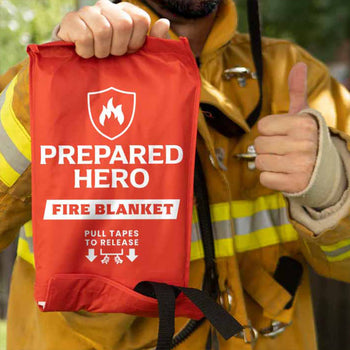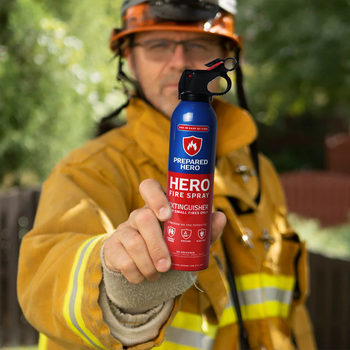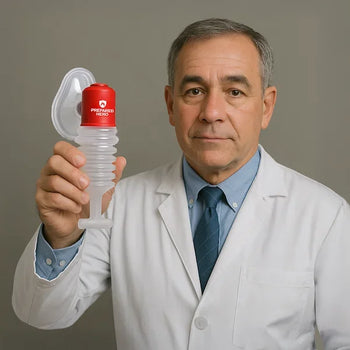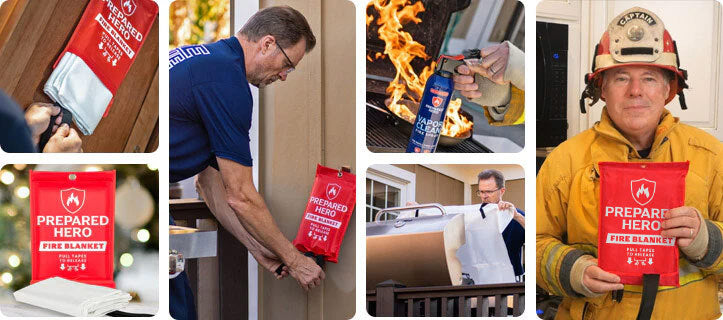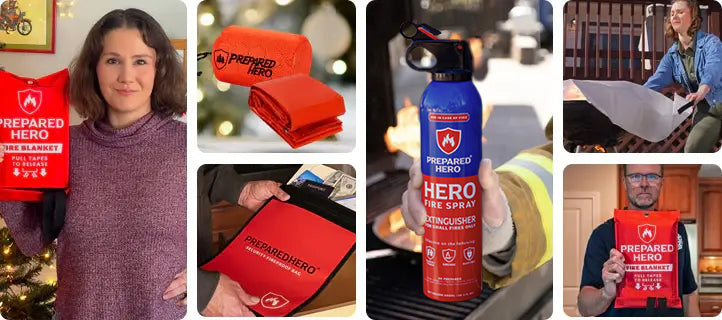Where you put your smoke detectors matters just as much as installing them. Proper placement makes sure they can detect...
Fire extinguishers may look similar, but they’re not designed for the same fire. Each type is made to put out specific kinds of fires, so using the wrong one can make things worse. For this reason, you should know what fire extinguisher classes are used for.
From everyday combustibles like tissue to kitchen staples like oil, each class has a purpose. In this guide, we’ll walk through the different fire extinguisher classes, how they work, and which to choose.
What Are the Five Different Classes of Fire Extinguishers?
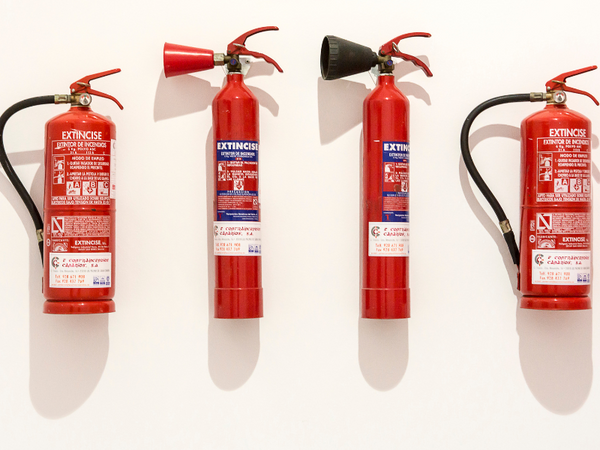
Fire extinguishers come in five classes, and each is made for a specific type of fire. Knowing the difference helps you pick the right one and stay safe. Here are the different classes of fire extinguishers:
1. Class A Fire Extinguisher
As the term suggests, a Class A fire extinguisher is built to fight fires caused by common combustibles like wood, paper, fabric, plastics, and rubber. These are everyday materials that can easily catch and spread fire. The extinguisher works by removing heat, cutting off oxygen, and stopping the chemical reaction that keeps the fire burning.
The most common Class A extinguisher is water-based. As the term suggests, water fire extinguishers use plain water or water with additives to make it more effective. Some have antifreeze for use in cold conditions. Water mist models use deionized water sprayed as a fine mist, making them safe for certain sensitive environments.
On the other hand, foam extinguishers release a layer of foam that blocks oxygen and cools the material. Powder or dry chemical extinguishers use agents like monoammonium phosphate or sodium bicarbonate, which coat the fuel to starve the fire of oxygen. Wet chemical extinguishers, while less common for Class A fires, contain potassium compounds that lower the temperature and stop the flames from spreading.
How to Identify Class A Fire Extinguishers
Class A fire extinguishers have a specific symbol: a green triangle with the letter A inside it. This triangle indicates that it can put out fires caused by ordinary combustible materials like paper, wood, cloth, rubber, and most plastics. If you see the green triangle label, you know it’s the right extinguisher for a Class A fire.
You might also use multi-purpose extinguishers, which can handle Class A, B, and C fires. These fire extinguishers usually have the letters A, B, and C in different shapes. A letter B inside a square means you can use the extinguisher against fires caused by flammable liquids and gases. Meanwhile, a C inside a circle means you can use the extinguisher against electrical fires.
In most cases, Class A fire extinguishers come with ratings. The numerical ratings indicate the amount of water it holds and the amount of fire it can put out.
What Is a Class A Fire?
A Class A fire is fueled by everyday materials like wood, paper, fabric, most plastics, cardboard, and dry vegetation. These ordinary combustibles are common in homes, offices, and outdoor spaces. They also ignite easily when exposed to heat, sparks, or open flames.
Class A fires can start from simple accidents, like a candle tipping over onto a wooden table, a stack of papers too close to a space heater, or a rag left near a hot stove. Dry leaves, grass, and branches can catch fire outside from something as small as a dropped match or cigarette.
While Class A fires might seem less threatening than chemical or electrical fires, they can spread fast. Once flames consume one combustible item, they can quickly move to others nearby and turn a small flame into a major fire. Furniture, clutter, and stored boxes can all make the fire grow faster.
Class A fires produce heat, flames, and smoke, so they’re dangerous to both people and property. Knowing what fuels them is the first step in preventing them. Keeping flammable materials away from heat sources can go a long way in avoiding this fire type.
2. Class B Fire Extinguisher
A Class B fire extinguisher puts out fires fueled by flammable liquids and gases, such as gasoline, alcohol, propane, butane, kerosene, paint thinners, and certain cleaning products. These fires are dangerous because water can spread or cause them to react violently.
Class B extinguishers use specific agents to stop the flames. For one, foam extinguishers create a barrier that floats on the liquid’s surface, which cuts off oxygen and prevents reignition. On the other hand, carbon dioxide extinguishers work by displacing oxygen around the fire and leave no residue, so they’re safe to use near electronics or delicate equipment.
Dry powder extinguishers coat the fuel to block oxygen and protect it from heat, while water mist extinguishers release fine deionized water particles that cool the fire without conducting electricity.
How to Identify Class B Fire Extinguishers
A Class B extinguisher has a red square label with a large letter B inside it. Some models are multi-purpose and also display letters like A or C for other fire types. Meanwhile, the numerical rating on the label shows the size of fire it can handle. Whether stored in a garage, workshop, or kitchen, having a Class B fire extinguisher ensures you can respond quickly and effectively to dangerous liquid and gas fires.
What Is a Class B Fire?
A Class B fire is fueled by flammable liquids or gases. Due to this, it’s more dangerous and harder to put out than many other fire types. These fires can be caused by substances you might already have at home or work, such as gasoline, alcohol, kerosene, paint thinners, propane, butane, and certain cleaning products or aerosol sprays. They can start from something as simple as a spill near a heat source, a gas leak ignited by a spark, or vapors building up in an enclosed, poorly ventilated area.
Once ignited, Class B fires spread quickly, burn intensely, and can produce toxic fumes. They can happen almost anywhere: garages, workshops, kitchens, labs, factories, or gas stations. In homes, spilling liquor onto a lit stove burner or using spray paint near a running power tool could trigger one. In industrial settings, gas leaks near hot equipment can cause explosions.
Water should never be used to put out a Class B fire because it can spread the flames or react violently. Instead, you need the right tool, like a Class B fire extinguisher, fire blanket, or fire spray, to smother the flames and prevent reignition.
3. Class C Fire Extinguisher
A Class C fire extinguisher is made to safely put out electrical fires. These fires, also known as Class C fires, are caused by faulty wiring, overloaded outlets, overheating appliances, or malfunctioning electronics. Its main goal is to stop the fire without putting you at risk of electric shock or damaging your equipment.
These extinguishers use non-conductive agents so electricity can’t travel through them. Common types include carbon dioxide, dry chemical powder, and water mist. Carbon dioxide extinguishers work by displacing oxygen and cooling the fire while leaving no residue. Dry chemical powder (often made from sodium or potassium bicarbonate, or monoammonium phosphate) coats the fuel, cutting off oxygen and preventing reignition. On the other hand, water mist extinguishers use deionized water broken into tiny droplets. They don’t conduct electricity, so they can safely cool and smother flames.
How to Identify Class C Fire Extinguishers
A Class C fire extinguisher has a blue circle with the letter C inside. This mark means the extinguisher is designed for electrical fires, such as those caused by faulty wiring, overloaded outlets, overheating appliances, or other electrical issues.
Some fire extinguishers are multi-purpose, so you may also see other symbols alongside the Class C marking. An A inside a triangle means it can also be used on fires involving solid combustibles like wood, paper, or cloth. Meanwhile, a B inside a square indicates it can handle flammable liquid and gas fires. If you see A, B, and C together, that extinguisher can deal with three fire types.
Unlike Class A and B extinguishers, Class C units don’t have numerical ratings. Instead, they’re tested for non-conductivity, which means they won’t let electricity travel through the extinguishing agent while in use. This is crucial for safety because using the wrong extinguisher type on an electrical fire could cause electric shock, damage the equipment, or make the fire worse.
What Is a Class C Fire?
A Class C fire starts from energized electrical equipment, which is still connected to a live power source. As long as the power is on, the fire can keep burning and spread to other areas. These fires are dangerous because they can start quietly, spread fast, and sometimes lead to explosions. They’re not just a home problem; Class C fires can happen in offices, factories, data centers, and outdoors.
Common causes include faulty wiring, overloaded outlets, malfunctioning appliances, heating devices, and overheating electronics. For example, a damaged extension cord, an overheated space heater, or a malfunctioning toaster can all trigger a Class C fire. Since wiring often runs behind walls and ceilings, the flames might grow unnoticed until they’re harder to control.
Water should never be used on a Class C fire because it conducts electricity and can cause electric shock. Instead, the safest way to handle them is by turning off the power source and using tools like a Class C-rated fire extinguisher, fire spray, or fire blanket. Acting quickly and safely is key because these fires can escalate in minutes, putting people, property, and lives at serious risk.
4. Class D Fire Extinguisher
A Class D fire extinguisher specifically made for fires involving combustible metals like lithium, magnesium, sodium, aluminum, and titanium. These metals burn at extremely high temperatures and can react dangerously with water, which is why regular ABC extinguishers or water aren’t safe to use.
The extinguisher works by releasing a special dry powder over the burning metal. This powder creates a barrier between the metal and the oxygen in the air, which helps smother the flames and stop the reaction. It also absorbs heat, which reduces the fire’s intensity until it’s fully out.
The dry powder is typically made of materials like powdered graphite, sodium chloride granules, or copper fragments. Each of these materials is chosen for its ability to handle the extreme heat of a metal fire without causing a dangerous reaction.
Its main function is to safely and effectively put out metal fires that would otherwise be uncontrollable with standard firefighting methods. However, Class D extinguishers are only for this purpose. They shouldn’t be used on other fire types. If you work around combustible metals, keeping one nearby is essential for quick action when a fire starts.
How to Identify Class D Fire Extinguishers
You can spot a Class D fire extinguisher by looking for its unique symbol: a yellow star with the letter D inside. This fire extinguisher symbol indicates it’s built to handle fires caused by combustible metals like lithium, magnesium, sodium, aluminum, and titanium.
If you don’t see the yellow star and letter D, it’s not meant for metal fires. Multi‑purpose or ABC extinguishers won’t work against metal fires. Plus, using water can be dangerous, as some metals react violently with it.
Always check the label before grabbing an extinguisher in an emergency. Manufacturers clearly list the fire classes an extinguisher can handle, so you can confirm you have the right one for the job.
The National Fire Protection Association (NFPA) also rates these extinguishers based on how much extinguishing agent they carry and how it’s applied. So, if you work around combustible metals, make sure your extinguisher has the yellow star symbol.
What Is a Class D Fire?
A Class D fire involves combustible metals like magnesium, lithium, sodium, potassium, titanium, aluminum, zinc, and beryllium. These metals don’t burn like wood or paper. They can explode, burn at extremely high temperatures, and react violently with water or air. That’s why using the wrong method, like pouring water on it, can make the situation worse.
These fires usually start when metal dust, shavings, or molten metal come into contact with heat, sparks, or flames. They’re most common in industrial environments such as factories, foundries, welding shops, recycling facilities, and some laboratories.
Class D fires are dangerous because they can spread fast, cause severe burns, release toxic fumes, and damage property. They can also lead to costly downtime, lawsuits, and emotional trauma for those involved.
5. Class K Fire Extinguisher
A Class K fire extinguisher puts out grease fires that usually start in the kitchen. It’s commonly caused by vegetable oils and animal fats. It uses a wet chemical agent, which is often made of potassium acetate, potassium carbonate, potassium citrate, or a mix of these.
When discharged, the fine spray of chemicals reacts with the burning oil or grease. This creates a soapy layer on top of the fuel. The process is called saponification. That layer smothers the flames, blocks oxygen, and cools the oil below its ignition point to stop the fire from reigniting.
Since the spray is gentle, it doesn’t splash hot oil around, which reduces the risk of the fire spreading. It also works on grease fires involving kitchen appliances, even if they’re electric.
Its main function is to safely and quickly put out cooking-related fires that water or other extinguishers can’t handle. Plus, using water on a grease fire can cause dangerous explosions, making a Class K extinguisher essential for home and commercial kitchens like those in restaurants and food trucks.
How to Identify Class K Fire Extinguishers
A Class K fire extinguisher has a black hexagon with the letter K inside. This symbol means it’s built to handle fires caused by cooking oil, fat, and grease.
Don’t mistake it for a multi-purpose extinguisher. Those usually have the letters A, B, and C in different shapes, which are not meant for Class K fires.
Unlike other types, Class K extinguishers don’t have ratings. According to the NFPA, there’s only one test for grease fire extinguishers, which is pass or fail. So, when in doubt, always check the label before using one.
What Is a Class K Fire?
A Class K fire occurs when cooking oil, fat, or grease gets too hot and ignites. These fires are common in home and commercial kitchens, especially when deep frying or cooking at high temperatures. They’re dangerous because the flames can flare up fast, spread quickly, and burn at extremely high temperatures.
Common causes include unattended cooking, grease buildup, frying frozen food, and having flammable items too close to your stove. Even small splashes or spills can start a fire if the oil is hot enough. Plus, you can’t use water to put them out because it will make the burning oil splatter or explode. Find out more about putting out a grease fire here.
Is There a Class ABC Fire Extinguisher?

Yes, ABC fire extinguishers exist, and they’re built to handle three common fire types: Class A, B, and C. This means they can put out fires involving ordinary combustibles, flammable liquids & gases, and electrical equipment.
They usually contain a dry chemical agent that works by cutting off the fire’s oxygen supply and stopping it from spreading. Since they’re so versatile, ABC extinguishers are a popular choice for homes, offices, and general workplaces.
Which Extinguisher Is Best for Class A, B, and C Fires?
An ABC multi-purpose fire extinguisher is the best for Class A, B, and C fires. It uses a dry chemical agent that works on the said fire classes.
Class A fires involve everyday items like wood, paper, and cloth. Class B fires involve flammable liquids like gasoline, grease, and oil, while Class C fires involve electrical equipment.
While ABC dry chemical extinguishers are versatile and reliable, they can leave a mess and may corrode some materials. In specialized environments, CO2 or water mist extinguishers might be a better fit.
Do Fire Extinguishers Expire?

Yes, fire extinguishers expire. Their lifespan depends on the type, whether they’re rechargeable or disposable, and how well they’re maintained.
According to the International Fire and Safety Journal, a well-maintained fire extinguisher lasts 10 to 12 years. However, certain models may become outdated because regulations change or technology improves. In general, disposable fire extinguishers last for up to 12 years, while rechargeable ones have to be recharged every six years.
You can check if yours is expired by looking at the manufacturing date, inspecting the pressure gauge, and checking for damage like rust, cracks, or a broken tamper seal.
Expired extinguishers won’t work due to low pressure, clogged nozzles, or degraded chemicals. If yours is past its prime, replace it or consider alternatives like fire blankets. They don’t expire and are easy to store.
How to Use a Fire Extinguisher

Knowing how to use a fire extinguisher could mean life or death in an emergency. The PASS method keeps things simple so you can act fast and safely. Here’s how to use an extinguisher properly:
1. Pull
First, remove the safety pin from the extinguisher. This unlocks the handle so you can release the agent. If your extinguisher has a tamper seal, break it before pulling the pin.
2. Aim
Point the nozzle or hose at the base of the fire, not the flames. Targeting the fuel source puts out the fire quickly.
3. Squeeze
Press the handle or lever slowly and evenly. Doing this controls the flow of the extinguishing agent so you can aim accurately without wasting it.
4. Sweep
Move the nozzle from side to side across the fire’s base. Keep going until the flames are out. Stay alert for flare-ups and repeat if needed.
What Does Race Stand For?
The RACE acronym stands for Remove or Rescue, Alarm or Alert, Confine or Contain, and Extinguish or Evacuate.
Remove or Rescue means getting people and pets out of danger first. This means helping anyone who can’t move on their own, like children, elderly family members, or those with injuries.
Meanwhile, Alarm or Alert is about letting everyone know there’s a fire. Activate the fire alarm if it’s safe, or shout “Fire!” so others can react quickly.
Next, Confine or Contain means closing doors and windows to slow the fire’s spread. This limits oxygen and buys time for evacuation or firefighting.
Extinguish or Evacuate is the final step. If the fire is small and you know how to use the right tool, try to put it out. Leave right away if it’s too big or unsafe.
Knowing what RACE means helps you stay focused under pressure, protect others, and avoid dangerous delays. It’s an easy, life-saving plan for homes, workplaces, and public spaces.
Which Extinguisher Is Best for Home Use?

An ABC dry chemical fire extinguisher is the best choice for most homes. It’s designed to handle the three most common fire types you might face at home: Class A for everyday combustibles like paper and wood, Class B for flammable liquids, and Class C for electrical fires.
ABC extinguishers are widely available at hardware and home improvement stores, so they’re easy to find. They’re also cost‑effective and protect you without the higher price of specialized extinguishers. Plus, most have a simple design and a pressure gauge, so you can quickly check if they’re ready to use.
It’s smart to keep at least one extinguisher on every level of your home, with priority areas being the kitchen and garage, where fires are more likely to start. Its multipurpose nature, affordability, and ease of use make ABC extinguishers a reliable choice for home safety.
What Is a Blue Extinguisher Used For?
A blue fire extinguisher is a dry powder type that’s packed with monoammonium phosphate or potassium bicarbonate. The powder is non‑conductive, which means it can be used on electrical fires without risking a shock. It works by smothering the flames and cutting off the fire’s oxygen supply.
These extinguishers are versatile because they can handle Class A fires involving everyday materials, Class B fires from flammable liquids, and Class C fires from flammable gases. They can also be used on some electrical fires up to 1,000 volts. This makes them a good all-around option for tackling different types of small fires safely.
What Is the Most Difficult Fire to Put Out?

The hardest fires to put out are usually Class D fires, which involve combustible metals like magnesium, lithium, potassium, and titanium. These fires burn at extremely high temperatures, often over 2,000°F, which makes cooling them very difficult.
They’re also highly reactive. Using water or common extinguishing agents can be dangerous, sometimes causing explosions or releasing flammable gases. This is why trying to fight a metal fire with the wrong method can actually make things worse.
You need a specialized dry powder extinguisher specifically made for combustible metals to put out a Class D fire. Without the right tools, these fires can quickly get out of control.
What Kind of Fires Is an ABC Extinguisher Not Good For?
An ABC fire extinguisher is great for many situations, but it’s not meant for Class D or Class K fires. Trying to use it on these can be ineffective and even dangerous.
Class D fires involve combustible metals like magnesium, titanium, and sodium. These metals can react violently with the dry chemical in ABC extinguishers, making the fire worse instead of putting it out.
Class K fires happen with cooking oils and fats, usually in deep fryers or commercial kitchens. ABC extinguishers aren’t built to handle the extreme heat or the way these fires burn. They can also cause splashing, which spreads the flames.
For metal fires, you need a Class D extinguisher, and for cooking fires, a Class K is the safe choice.
Is a Fire Blanket Better Than an Extinguisher?

A fire blanket is better than a fire extinguisher in certain situations. It’s lighter, easier to use, and doesn’t leave a mess. While extinguishers can weigh five pounds or more, a fire blanket is only one to two pounds, so it’s easier to grab fast.
Unlike extinguishers, fire blankets are safe to use on people whose clothes are on fire. Simply drape it over them to smother the flames. They’re also simple to operate, with no training required.
In addition, extinguishers can leave chemical residue that’s messy and sometimes harmful to pets or kids, while blankets leave no debris. Plus, fire blankets last for years without maintenance, while extinguishers expire and need servicing.
Storage is also easier. A fire blanket takes up little space and can hang on a wall. That said, both tools have their place. If you want something lightweight, low-maintenance, and versatile, a fire blanket is a solid choice.
Here’s a table summarizing the differences between Prepared Hero’s fire blanket and a regular fire extinguisher:
| Prepared Hero’s Fire Blanket | Regular Fire Extinguisher |
| Lightweight, easy to carry | Heavy, hard to carry |
| Affordable | Expensive |
| Doesn’t expire | Expires |
| Easy to store | Needs more space for storage |
| Non-toxic | Hard to clean |
| Safe for kids and pets | Not safe for kids and pets |
| Doesn’t leave a mess | Leaves a mess |
| Safe for kids and pets | Not safe for kids and pets |
| Can be used on humans and pets | Can’t be used on humans and pets |
Conclusion
Understanding the different fire extinguisher classes can save lives and prevent serious damage. Each type is designed for specific fires, from everyday combustibles to grease, gas, metal, and electrical hazards. Using the wrong extinguisher can make a fire worse, so always check the label before acting.
Whether at home, in the office, or in industrial settings, the right extinguisher lets you respond quickly and safely. Being prepared and informed is one of the best steps you can take for fire safety.
Do you want reliable, easy-to-use, and affordable tools to put out fires? Check out Prepared Hero’s fire prevention tools here, and get up to 51% off on certain items. Stay prepared, hero!


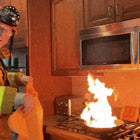 Fire
Fire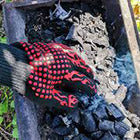 Safety
Safety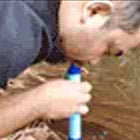 Survival
Survival Protection
Protection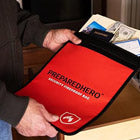 New
New
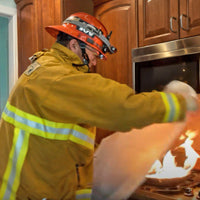 Fire
Fire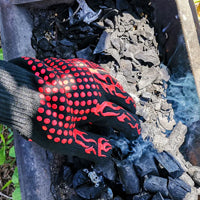 Safety
Safety Survival
Survival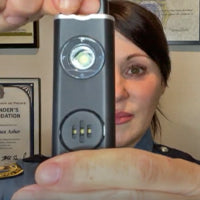 Protection
Protection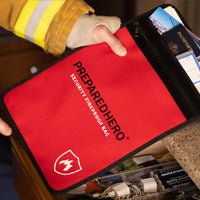 New
New
